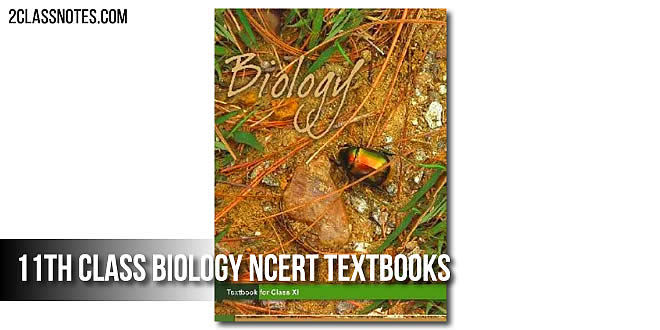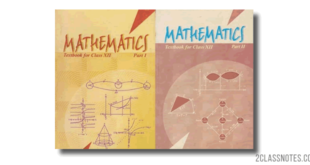CBSE Class 11th Biology Syllabus 2025: This article contains the latest and revised syllabus for CBSE Class 11 Biology in PDF format. Find the theory and practical syllabus here along with the list of practicals.
CBSE Biology Syllabus for Class 11: The Central Board of Secondary Education (CBSE) is the national educational body that delivers education to students all across India. CBSE aims to provide holistic education to students with all the advanced information that makes them prepare for the global competitive environment. Every year, the CBSE board releases a fresh syllabus for Classes 9 to 12. The syllabus comes with changes, and teachers have to update the curriculum to prepare students for the board exams. The CBSE has released the 2024–25 syllabus for Class 11 Biology, which includes detailed information about the curriculum objectives, theory, and practical topics, as well as a list of practicals that need to be done in this academic year. Check out the complete CBSE Class 11 Biology syllabus 2024–25 here in a free, downloadable PDF.
CBSE School Board: Key Highlights
Check the details below:
| Aspect | Description |
| Affiliation | Central Board of Secondary Education (CBSE) is a national board of education under the Ministry of Education (India). |
| Schools Affiliated | Over 21,000 schools in India and abroad. |
| Curriculum | Follows a standardised curriculum for classes 1 to 12, focusing on academics, co-curricular activities, and life skills. |
| Examinations | Conducts national-level standardized exams: Board Exams for Class 10 (Secondary School Examination) and Class 12 (Senior School Certificate Examination). |
| Evaluation | Combination of internal assessments and external board exams. |
| Recognition | Certificates are recognized by most universities and institutions for higher education in India and abroad. |
| Website | cbse.gov.in |
CBSE Class 11th Biology Course Structure 2024-25
The CBSE Class 11th Biology 2025 exam will be for 70 marks. Students will have to complete the exam in 3 hours duration. The questions will be asked from five units which are given below along with their respective marks.
| Unit | Title | Marks |
| I | Diversity of Living Organisms | 15 |
| II | Structural Organization in Plants and Animals | 10 |
| III | Cell: Structure and Function | 15 |
| IV | Plant Physiology | 12 |
| V | Human Physiology | 18 |
| Total | 70 |
CBSE Class 11 Biology Syllabus 2024-25
Check the unit-wise theory syllabus below:
Unit – I Diversity of Living Organisms
Chapter – 1: The Living World
Biodiversity; Need for classification; three domains of life; taxonomy and systematics; concept of species and taxonomical hierarchy; binomial nomenclature
Chapter – 2: Biological Classification
Five kingdom classification; Salient features and classification of Monera, Protista and Fungi into major groups; Lichens, Viruses and Viroids.
Chapter – 3: Plant Kingdom
Classification of plants into major groups; Salient and distinguishing features and a few examples of Algae, Bryophyta, Pteridophyta, Gymnospermae (Topics excluded – Angiosperms, Plant Life Cycle and Alternation of Generations)
Chapter – 4: Animal Kingdom
Salient features and classification of animals, non-chordates up to phyla level and chordates upto class level (salient features and at a few examples of each category).
(No live animals or specimen should be displayed.)
Unit – II Structural Organization in Plants and Animals
Chapter – 5: Morphology of Flowering Plants
Morphology of different parts of flowering plants: root, stem, leaf, inflorescence, flower, fruit
and seed. Description of family Solanaceae
Chapter – 6: Anatomy of Flowering Plants
Anatomy and functions of tissue systems in dicots and monocots.
Chapter – 7: Structural Organisation in Animals
Morphology, Anatomy and functions of different systems (digestive, circulatory, respiratory, nervous and reproductive) of frog.
Unit – III Cell: Structure and Function
Chapter – 8: Cell-The Unit of Life
Cell theory and cell as the basic unit of life, structure of prokaryotic and eukaryotic cells; Plant cell and animal cell; cell envelope; cell membrane, cell wall; cell organelles – structure and function; endomembrane system, endoplasmic reticulum, golgi bodies, lysosomes, vacuoles, mitochondria, ribosomes, plastids, microbodies; cytoskeleton, cilia, flagella, centrioles (ultrastructure and function); nucleus.
Chapter – 9: Biomolecules
Chemical constituents of living cells: biomolecules, structure and function of proteins, carbohydrates, lipids, and nucleic acids; Enzyme – types, properties, enzyme action. (Topics excluded: Nature of Bond Linking Monomers in a Polymer, Dynamic State of Body Constituents Concept of Metabolism, Metabolic Basis of Living, The Living State).
Chapter – 10: Cell Cycle and Cell Division
Cell cycle, mitosis, meiosis and their significance
Unit – IV Plant Physiology
Chapter – 13: Photosynthesis in Higher Plants
Photosynthesis as a means of autotrophic nutrition; site of photosynthesis, pigments involved in photosynthesis (elementary idea); photochemical and biosynthetic phases of photosynthesis; cyclic and non-cyclic photophosphorylation; chemiosmotic hypothesis; photorespiration; C3 and C4 pathways; factors affecting photosynthesis.
Chapter – 14: Respiration in Plants
Exchange of gases; cellular respiration – glycolysis, fermentation (anaerobic), TCA cycle and electron transport system (aerobic); energy relations – number of ATP molecules generated; amphibolic pathways; respiratory quotient.
Chapter – 15: Plant – Growth and Development
Seed germination; phases of plant growth and plant growth rate; conditions of growth; differentiation, dedifferentiation and re-differentiation; sequence of developmental processes in a plant cell; plant growth regulators – auxin, gibberellin, cytokinin, ethylene, ABA.
Unit – V Human Physiology
Chapter – 17: Breathing and Exchange of Gases
Respiratory organs in animals (recall only); Respiratory system in humans; mechanism of breathing and its regulation in humans – exchange of gases, transport of gases and regulation of respiration, respiratory volume; disorders related to respiration – asthma, emphysema, occupational respiratory disorders.
Chapter – 18: Body Fluids and Circulation
Composition of blood, blood groups, coagulation of blood; composition of lymph and its function; human circulatory system – Structure of human heart and blood vessels; cardiac cycle, cardiac output, ECG; double circulation; regulation of cardiac activity; disorders of circulatory system – hypertension, coronary artery disease, angina pectoris, heart failure.
Chapter – 19: Excretory Products and their Elimination
Modes of excretion – ammonotelism, ureotelism, uricotelism; human excretory system – structure and function; urine formation, osmoregulation; regulation of kidney function – renin-angiotensin, atrial natriuretic factor, ADH and diabetes insipidus; role of other organs in excretion; disorders – uremia, renal failure, renal calculi, nephritis; dialysis and artificial kidney, kidney transplant.
Chapter – 20: Locomotion and Movement
Types of movement – ciliary, flagellar, muscular; skeletal muscle, contractile proteins and muscle contraction; skeletal system and its functions; joints; disorders of muscular and skeletal systems – myasthenia gravis, tetany, muscular dystrophy, arthritis, osteoporosis, gout.
Chapter – 21: Neural Control and Coordination
Neuron and nerves; Nervous system in humans – central nervous system; peripheral nervous system and visceral nervous system; generation and conduction of nerve impulse
Chapter – 22: Chemical Coordination and Integration
Endocrine glands and hormones; human endocrine system – hypothalamus, pituitary, pineal, thyroid, parathyroid, adrenal, pancreas, gonads; mechanism of hormone action (elementary idea); role of hormones as messengers and regulators, hypo – and hyperactivity and related disorders; dwarfism, acromegaly, cretinism, goiter, exophthalmic goitre, diabetes, Addison’s disease.
Note: Diseases related to all the human physiological systems to be taught in brief.
Download CBSE Class 11th Biology Syllabus 2024-2025 PDF
CBSE Class 11th Biology Practical Syllabus 2024-25
The CBSE Class 11th Biology 2025 Practical exam will be for 30 marks. Students will have to complete the exam in 3 hours duration. The evaluation will be done as per the below-mentioned format.
| Evaluation Scheme | Marks | |
| One Major Experiment Part A (Experiment No – 1, 3, 7, 8) | 5 Marks | |
| One Minor Experiment Part A (Experiment No – 6, 9, 10, 11, 12, 13) | 4 Marks | |
| Slide Preparation Part A (Experiment No – 2, 4, 5) | 5 Marks | |
| Spotting Part B | 7 Marks | |
| Practical Record + Viva Voce | (Credit to the student’s work over the academic session may be given) | 4 Marks |
| Project Record + Viva Voce | 5 Marks | |
| Total | 30 Marks | |
Teachers and students can check the list of experiments from the table below. This table comprises all the experiments that teachers have to conduct in the academic year 2024-25.
A: List of Experiments
- Study and describe locally available common flowering plants, from the family Solanaceae (Poaceae, Asteraceae or Brassicaceae can be substituted in case of particular geographical location) including dissection and display of floral whorls, anther and ovary to show number of chambers (floral formulae and floral diagrams), type of root (tap and adventitious); type of stem (herbaceous and woody); leaf (arrangement, shape, venation, simple and compound).
- Preparation and study of T.S. of dicot and monocot roots and stems (primary).
- Study of osmosis by potato osmometer.
- Study of plasmolysis in epidermal peels (e.g. Rhoeo / lily leaves or flashy scale leaves of onion bulb).
- Study of distribution of stomata on the upper and lower surfaces of leaves.
- Comparative study of the rates of transpiration in the upper and lower surfaces of leaves.
- Test for the presence of sugar, starch, proteins and fats in suitable plant and animal materials.
- Separation of plant pigments through paper chromatography.
- Study of the rate of respiration in flower buds/leaf tissue and germinating seeds.
- Test for presence of urea in urine.
- Test for presence of sugar in urine.
- Test for presence of albumin in urine.
- Test for presence of bile salts in urine.
B. Study and Observe the following (spotting):
- Parts of a compound microscope.
- Specimens / slides / models and identification with reasons – Bacteria, Oscillatoria, Spirogyra, Rhizopus, mushroom, yeast, liverwort, moss, fern, pine, one monocotyledonous plant, one dicotyledonous plant and one lichen.
- Virtual specimens / slides / models and identifying features of – Amoeba, Hydra, liver fluke, Ascaris, leech, earthworm, prawn, silkworm, honey bee, snail, starfish, shark, rohu, frog, lizard, pigeon and rabbit.
- Mitosis in onion root tip cells and animals cells (grasshopper) from permanent slides.
- Different types of inflorescence (cymose and racemose).
- Human skeleton and different types of joints with the help of virtual images/models only.
 Class Notes NCERT Solutions for CBSE Students
Class Notes NCERT Solutions for CBSE Students






